Restoration of Slave Quarters Will Help Austin More Fully Tell Its History, Experts Say
By Pamela Hall Vance
Reporting Texas
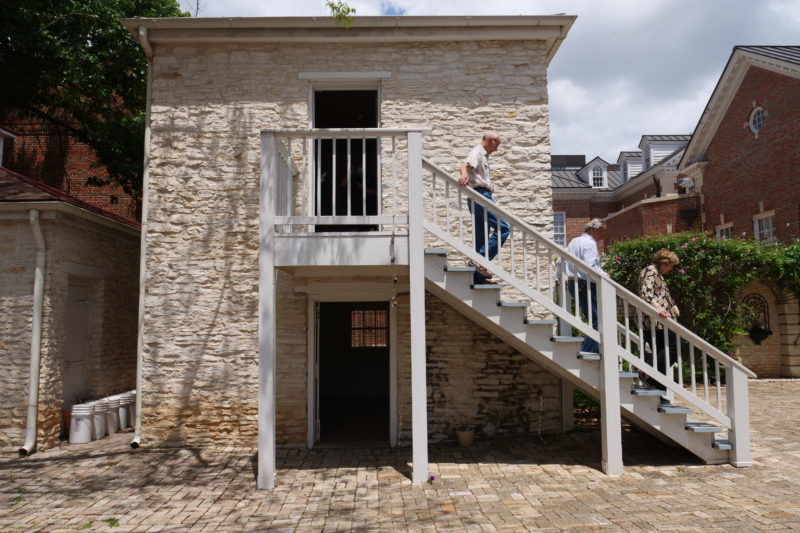
Ted Eubanks, a member of the Neill-Cochran House Museum advisory council, second from left, escorts two museum donors down the stairs of the house’s slave quarters during a tour on April 23, 2022 in Austin, Texas. The dwellings have been there since the mid-1800’s. Laura Ullman/Reporting Texas
Restoration of the only slave quarters still intact in Austin can lead to an “expanded narrative” of the city’s past that aids in understanding and racial equity, historic preservation experts said Saturday at the Neill-Cochran House Museum.
“We tell these stories, we preserve these sites, because if the sites aren’t there, you can easily say that never happened,” said Joe McGill, founder of the South Carolina-based Slave Dwelling Project. “It’s necessary for those slave dwellings to stay, because it tells the whole story. We want to know about all this.”
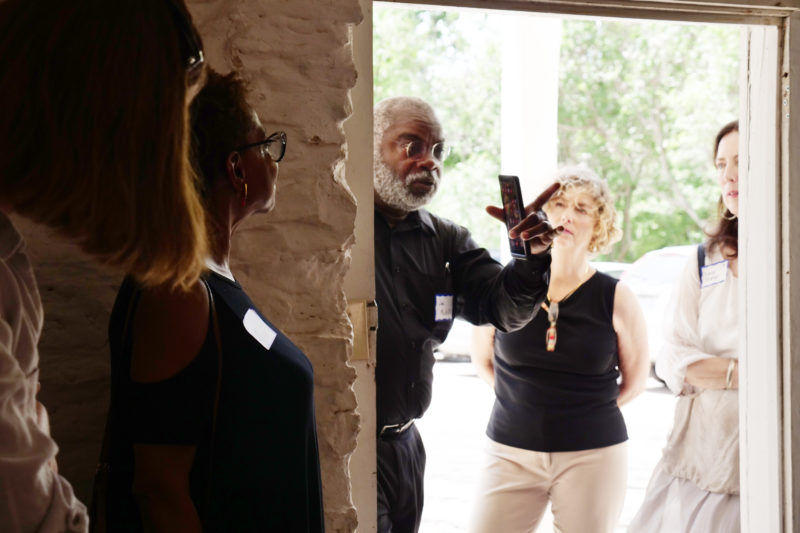
Joe McGill, a descendant of enslaved people and founder of the Slave Dwelling Project, describes living conditions in the quarters during the tour. McGill said he hopes to visit every former slave dwelling in the United States. Laura Ullman/Reporting Texas
A 12-month restoration of the slave quarters behind the Neill-Cochran House at 2310 San Gabriel St. in the West Campus neighborhood is set to begin this month. The project, called “Reckoning with the Past: Telling the Untold Story of Race in Austin,” will include new interpretive programming for visitors and prompted Saturday’s panel discussion at the museum.
Rowena Dasch, Neill-Cochran House Museum executive director and panel moderator, told the audience of about 40 people that the initial owners of the house, a young couple in their 30s, hired Abner Cook, the builder of the Texas Governor’s Mansion, to develop the site from 1855 to 1856.
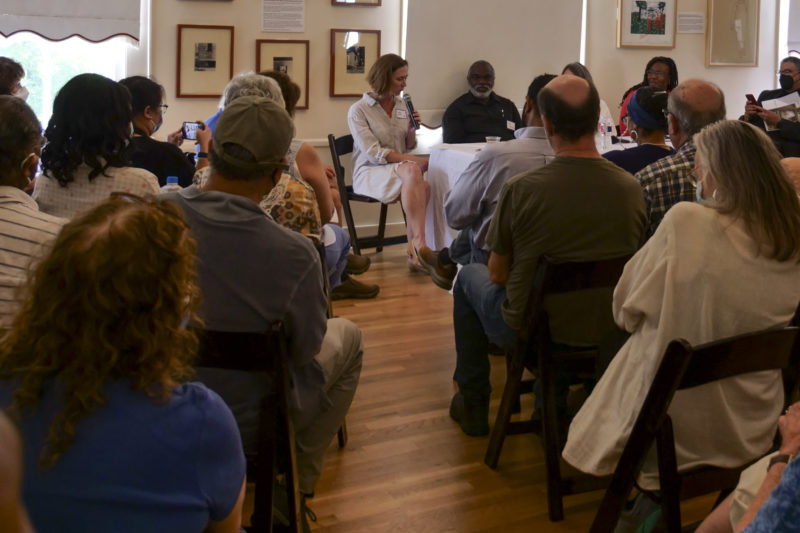
Rowena Dasch executive director of Neill-Cochran House Museum leads a panel discussion about the slave quarters restoration project. Laura Ullman/Reporting Texas
“The Hills sold five enslaved people to finance the project, which means that these buildings were not only built through labor and expert artisanship of enslaved people, but through the commodity of enslavement as well,” Dasch said.
“The more we can kind of share the value of these stories and the value of these places, by leading with our own, we hope that we can help others in Austin, do the same,” Dasch said. “This is land (and) these are neighborhoods and communities that were stripped from the Black community. … We have to figure out ways in which we can be a place of welcome. And we can repopulate essentially; … what we’re trying to do is actually give back our property to the city.”
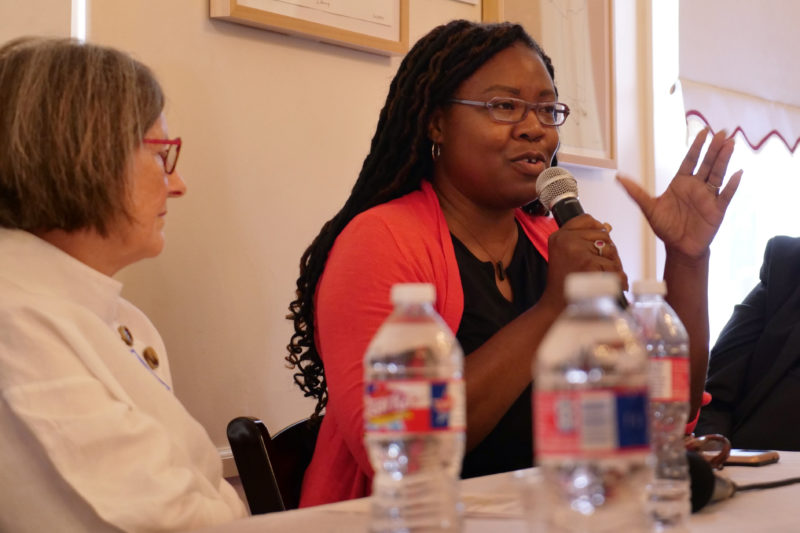
Tara Dudley, an assistant professor of architecture at the University to Texas at Austin, describes the value of preserving the slave quarters during a panel discussion on April 23, 2022. Laura Ullman/Reporting Texas
a 1928 city plan that codified segregation in Austin and the movement and displacement of Black people in Austin.
“This is not just a place for one narrative, one story,” Dudley said during the panel discussion. “We have so many ways that we can reach out to help enrich and reckon with Austin’s past here at this particular site.”
She recalled working with the Neill-Cochran House Museum for a course she developed on African American experiences in architecture. Student research in that course led to an exhibit and book titled “Reckoning with the Past: Slavery, Segregation, and Gentrification in Austin.”
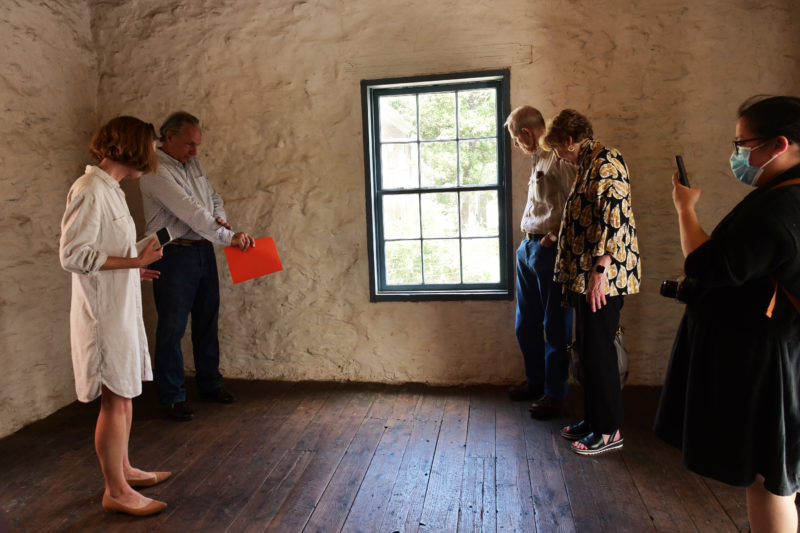
Ted Eubanks, second from left, points toward the small trap door enslaved people used to move from one floor to the other during a tour of the facility on April 23, 2022. Laura Ullman/Reporting Texas
“We really started pursuing this history in earnest,” Dudley said. “Learning not only about the evolution of the slave quarters, building its relationship to this building, how it fans out from the output of Abner Cook, who was a master builder at that time, but beginning to repopulate these spaces, this site in this environment with the stories of the enslaved.”
Dasch acknowledged that the slave quarters project has drawn some criticism.
“There are those who write us off as not the right people to be sharing this story, because they don’t think that we will do it appropriately,” Dasch said, noting some negative comments on Facebook about the weekend events from some people of color. “I hope that as the word gets out more, and as we continue to do the hard work; that we will win over some of those folks who remain skeptical that this is something we can do.”
Audience member Jennifer Cumberbatch, who worked with the museum on a project called “If These Walls Could Talk,” said that the comments were “a reaction to not having ownership over our story.”
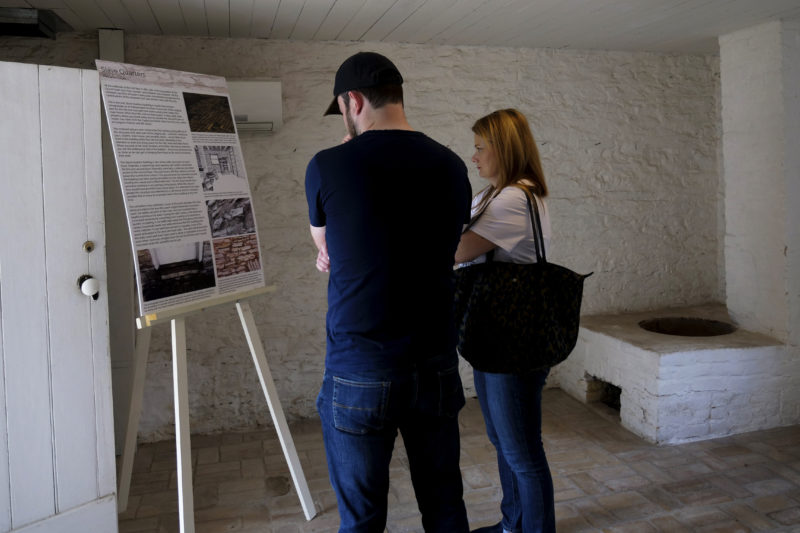
Visitors explore the downstairs room of the slave quarters at the Neill-Cochran House Museum. In the back right corner is a water heater used by enslaved people to do laundry. In the summer, the steam would make the room unbearably hot. Laura Ullman/Reporting Texas
“The history of enslaved people and Black people in this neighborhood is a part of the integrated history of this house and this neighborhood. They’re not two separate entities,” Cumberbatch said.”The whole point is to be inclusive in our storytelling, and you are taking the posture of saying, we’re going to tell the whole story and not just the traditional story that’s been told about this house, this neighborhood and Wheatville. The whole story is our lives are incredibly integrated. And we have the right to tell the whole story.”